Proximity labeling of protein complexes and cell-type-specific organellar proteomes in Arabidopsis enabled by TurboID
- PMID: 31535972
- PMCID: PMC6791687
- DOI: 10.7554/eLife.47864
Proximity labeling of protein complexes and cell-type-specific organellar proteomes in Arabidopsis enabled by TurboID
Abstract
Defining specific protein interactions and spatially or temporally restricted local proteomes improves our understanding of all cellular processes, but obtaining such data is challenging, especially for rare proteins, cell types, or events. Proximity labeling enables discovery of protein neighborhoods defining functional complexes and/or organellar protein compositions. Recent technological improvements, namely two highly active biotin ligase variants (TurboID and miniTurbo), allowed us to address two challenging questions in plants: (1) what are in vivo partners of a low abundant key developmental transcription factor and (2) what is the nuclear proteome of a rare cell type? Proteins identified with FAMA-TurboID include known interactors of this stomatal transcription factor and novel proteins that could facilitate its activator and repressor functions. Directing TurboID to stomatal nuclei enabled purification of cell type- and subcellular compartment-specific proteins. Broad tests of TurboID and miniTurbo in Arabidopsis and Nicotiana benthamiana and versatile vectors enable customization by plant researchers.
Keywords: A. thaliana; FAMA; N. benthamiana; biotin ligase; guard cell; nuclear proteome; plant biology; proximity labeling.
Plain language summary
Cells contain thousands of different proteins that work together to control processes essential for life. To fully understand how these processes work it is important to know which proteins interact with each other, and which proteins are present at specific times or in certain cellular locations. Investigating this is particularly difficult if the proteins of interest are rare, either because they are present only at low levels or because they are unique to a particular type of cell. One such protein known as FAMA is only found in young guard cells in plants. Guard cells are rare cells that surround pores on the surface of leaves. They help open or close the pores to allow carbon dioxide and water in and out of the plant. Inside these cells, FAMA regulates the activity of genes in the nucleus, the compartment in the cell that houses the plant’s DNA. Two recently developed molecular biology tools, called TurboID and miniTurbo, allow researchers to identify proteins that are in close contact with a protein of interest or are present at a specific place inside living animal cells. These tools use a modified enzyme to add a small chemical tag to proteins that are close to it, or anything to which it is anchored. Mair et al. adapted these tools for use in plants and tested their utility in two species that are commonly used in research: a tobacco relative called Nicotiana benthamiana, and the thale cress Arabidopsis thaliana. Their experiments showed that TurboID and miniTurbo can be used to tag proteins in different types of plant cells and organs, as well as at different stages of the plants’ lives. To test whether the tools are suitable for identifying partners of rare proteins, Mair et al. used FAMA as their protein of interest. Using TurboID, they detected several proteins in close proximity to FAMA, including some that FAMA was not previously known to interact with. Mair et al. also found that TurboID could identify a number of proteins that were present in the nuclei of guard cells. This shows that the tool can be used to detect proteins in sub-compartments of rare plant cell types. Taken together, these findings show that TurboID and miniTurbo may be customized to study plant protein interactions and to explore local protein ‘neighborhoods’, even for rare proteins or specific cell types. To enable other plant biology researchers to easily access the TurboID and miniTurbo toolset developed in this work, it has been added to the non-profit molecular biology repository Addgene.
© 2019, Mair et al.
Conflict of interest statement
AM, SX, TB, AT No competing interests declared, DB Reviewing editor, eLife
Figures

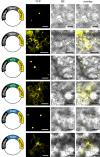
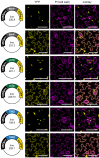




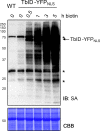





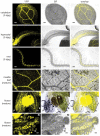
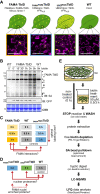
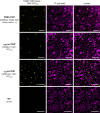
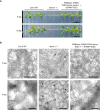

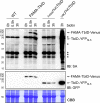
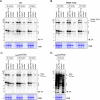







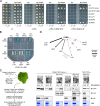



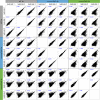


References
-
- Adrian J, Chang J, Ballenger CE, Bargmann BO, Alassimone J, Davies KA, Lau OS, Matos JL, Hachez C, Lanctot A, Vatén A, Birnbaum KD, Bergmann DC. Transcriptome dynamics of the stomatal lineage: birth, amplification, and termination of a self-renewing population. Developmental Cell. 2015;33:107–118. doi: 10.1016/j.devcel.2015.01.025. - DOI - PMC - PubMed
-
- Alban C. Biotin (Vitamin B8) Synthesis in plants. Advances in Botanical Research. 2011;59:39–66. doi: 10.1016/B978-0-12-385853-5.00005-2. - DOI
Publication types
MeSH terms
Substances
Grants and funding
LinkOut - more resources
Full Text Sources
Other Literature Sources
Molecular Biology Databases
Research Materials

